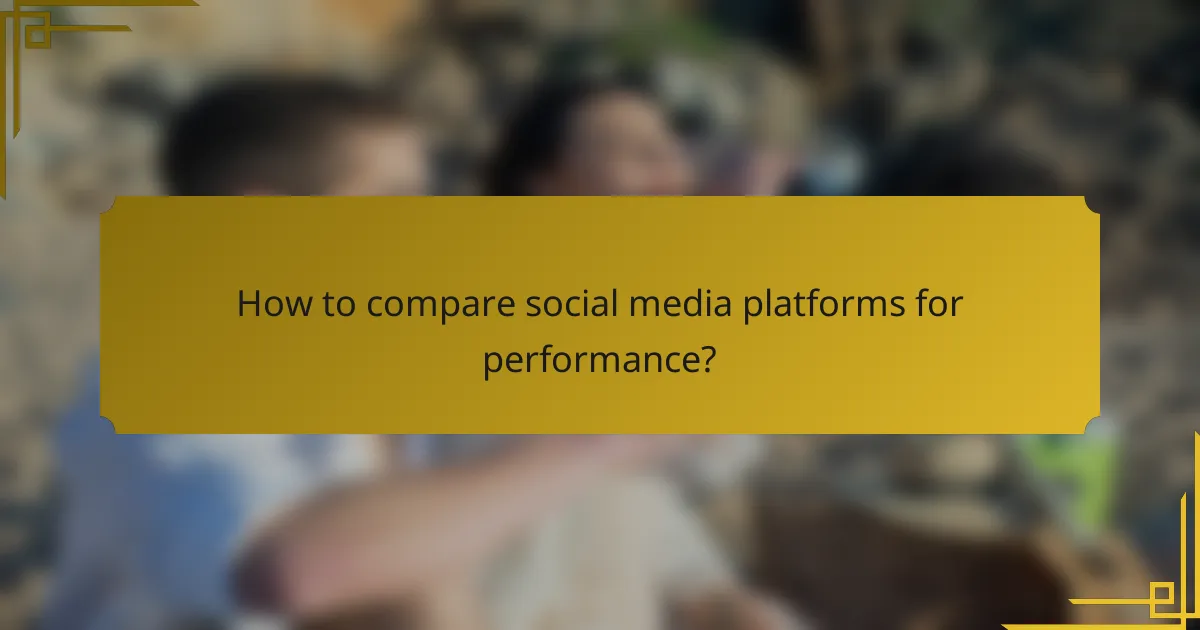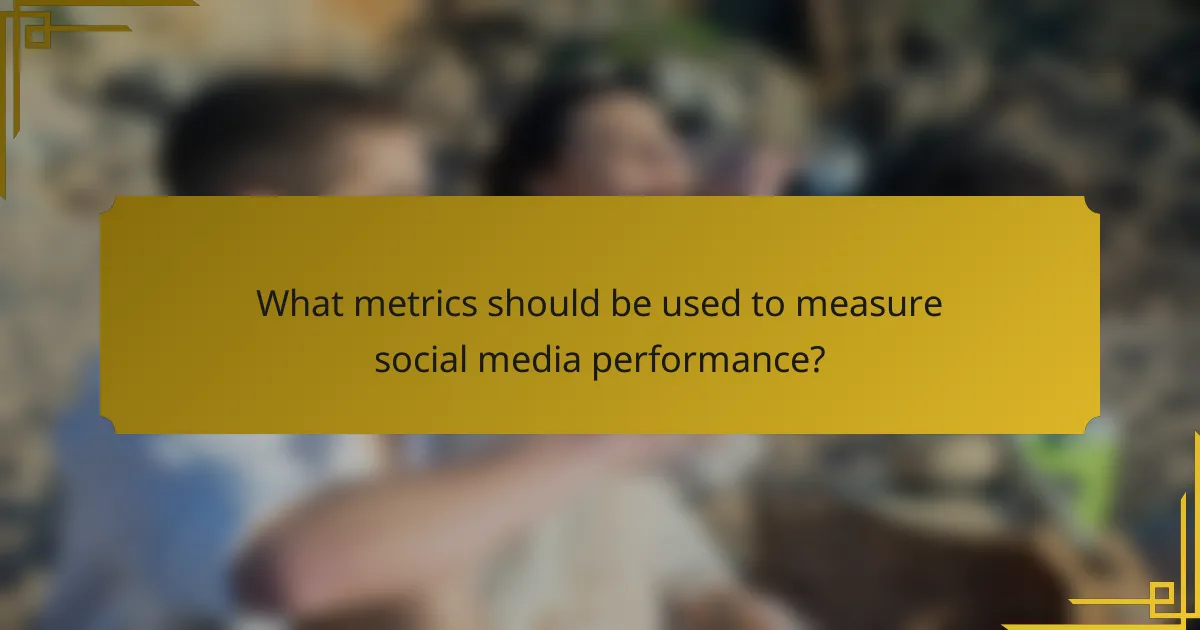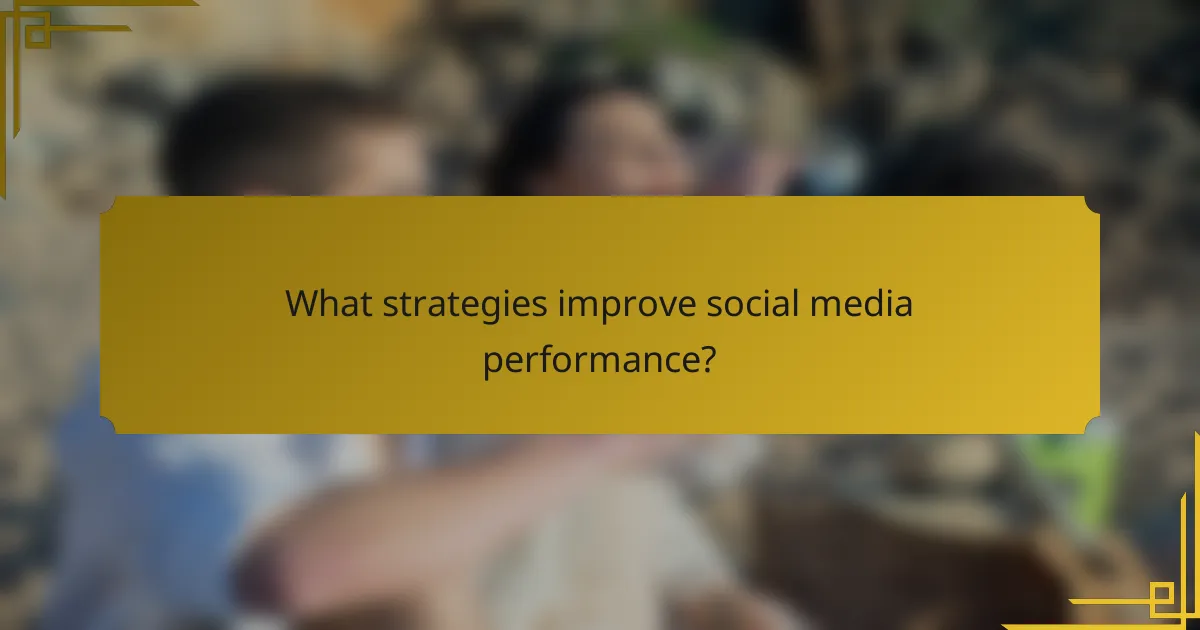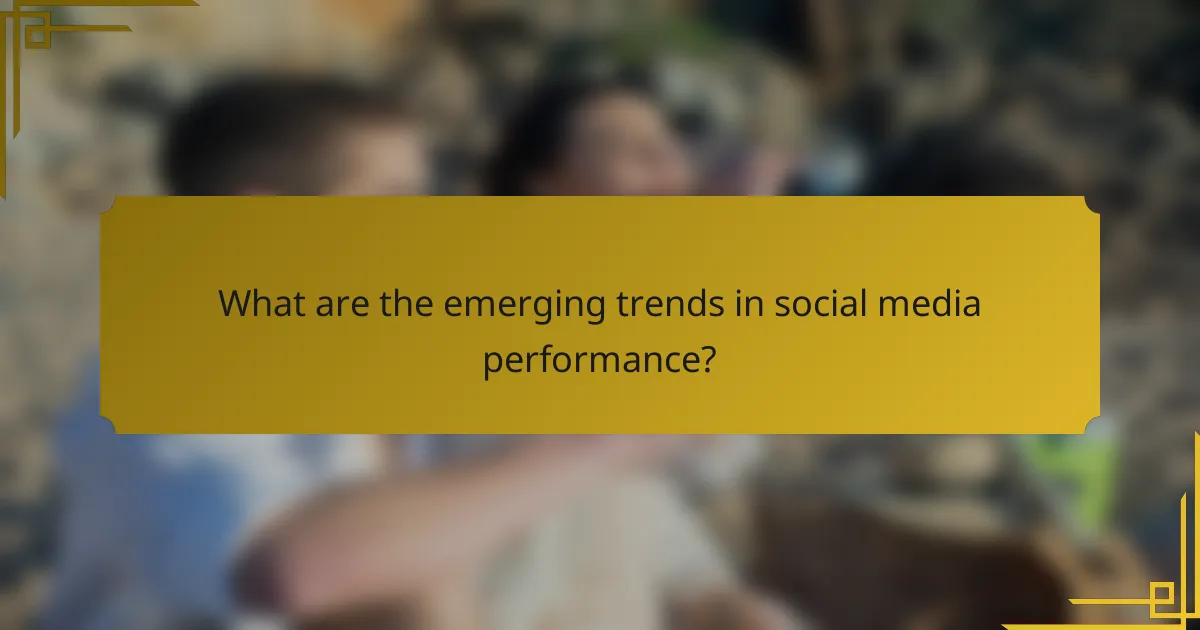In today’s digital landscape, comparing social media platforms is essential for optimizing performance and achieving marketing goals. By focusing on key metrics such as engagement rates, audience demographics, and content reach, businesses can make informed decisions about where to invest their efforts. Additionally, implementing effective strategies like content scheduling and influencer partnerships can further enhance engagement and maximize reach across chosen platforms.

How to compare social media platforms for performance?
To compare social media platforms for performance, focus on key metrics such as engagement rates, audience demographics, and content reach. Understanding these factors helps in selecting the right platform for your marketing goals and audience targeting.
Facebook vs Instagram metrics
Facebook and Instagram both offer robust metrics, but they cater to different user behaviors. Facebook typically has higher engagement for longer content and community interactions, while Instagram excels in visual storytelling and quick engagement through images and videos.
Key metrics to consider include reach, impressions, and engagement rates. For Facebook, aim for engagement rates around 1-3%, while Instagram often sees higher rates, typically between 2-5% for posts, depending on the industry.
Twitter vs LinkedIn engagement
Twitter and LinkedIn serve distinct purposes, affecting their engagement metrics. Twitter is ideal for real-time conversations and trending topics, often resulting in higher tweet impressions but lower overall engagement rates, usually around 0.5-1%. LinkedIn, on the other hand, is more professional, with engagement rates often between 1-2% for B2B content.
When comparing, consider the nature of your content. Use Twitter for quick updates and LinkedIn for in-depth articles or professional insights to maximize engagement on each platform.
Snapchat vs TikTok audience reach
Snapchat and TikTok both target younger audiences but differ in content format and engagement. Snapchat focuses on ephemeral content, with daily active users often engaging with stories, while TikTok thrives on short, entertaining videos that can go viral, leading to broader reach.
For audience reach, TikTok has rapidly grown to over a billion users, making it a powerful platform for brand visibility. Snapchat, while smaller, still boasts significant engagement, particularly among users aged 13-24. Tailor your content strategy to leverage the strengths of each platform for optimal audience engagement.

What metrics should be used to measure social media performance?
To effectively measure social media performance, focus on key metrics such as engagement rate, click-through rate, and conversion rate. These metrics provide insights into how well your content resonates with your audience and drives desired actions.
Engagement rate
Engagement rate measures the level of interaction your content receives from users, typically calculated as the total interactions (likes, comments, shares) divided by the total reach or impressions. A higher engagement rate indicates that your audience finds your content relevant and appealing.
Consider industry benchmarks when evaluating engagement rates, which can vary widely. For example, a good engagement rate for Instagram might range from 1% to 3%, while Facebook often sees lower rates, around 0.5% to 1.5%. Regularly analyze your engagement metrics to identify trends and adjust your content strategy accordingly.
Click-through rate
Click-through rate (CTR) measures the percentage of users who click on a link within your post compared to the total number of users who viewed the post. This metric is crucial for assessing how effectively your content drives traffic to your website or landing pages.
A typical CTR can vary by platform; for instance, a good CTR for Facebook ads might be around 2% to 5%, while email campaigns often see higher rates, sometimes exceeding 10%. To improve CTR, use compelling calls to action and ensure your links are relevant and enticing to your audience.
Conversion rate
Conversion rate indicates the percentage of users who complete a desired action after clicking through your content, such as making a purchase or signing up for a newsletter. This metric is vital for evaluating the effectiveness of your social media campaigns in achieving business goals.
Conversion rates can differ significantly based on the industry and platform, with averages typically ranging from 1% to 5%. To enhance conversion rates, ensure your landing pages are optimized for user experience and align closely with the messaging in your social media posts. Regularly test different strategies to find what resonates best with your audience.

What strategies improve social media performance?
Effective strategies to enhance social media performance include optimizing content scheduling, targeting the right audience, and forming influencer partnerships. These approaches can significantly increase engagement and reach across various platforms.
Content scheduling techniques
Content scheduling involves planning and timing your posts to maximize visibility and engagement. Tools like Hootsuite or Buffer can help automate this process, allowing you to post during peak user activity times, which typically range from late mornings to early evenings.
Consider creating a content calendar to organize your posts by theme, frequency, and platform. This helps maintain consistency and ensures a diverse mix of content types, such as images, videos, and articles, which can keep your audience engaged.
Audience targeting methods
Audience targeting is crucial for reaching the right users on social media. Utilize platform analytics to identify demographics, interests, and behaviors of your current followers. Tailor your content to resonate with these insights, ensuring it aligns with their preferences.
Employ paid advertising options to further refine your audience. Most platforms allow you to target users based on specific criteria, such as location, age, and interests, which can enhance the effectiveness of your campaigns.
Influencer partnerships
Partnering with influencers can amplify your brand’s reach and credibility. Identify influencers within your niche who have a genuine connection with their audience and align with your brand values. Collaborating with them can introduce your content to a broader audience.
When establishing partnerships, consider the influencer’s engagement rates and authenticity rather than just their follower count. A well-structured collaboration, such as co-created content or giveaways, can lead to increased visibility and engagement for both parties.

What are the best tools for social media analytics?
The best tools for social media analytics provide insights into performance metrics, audience engagement, and content effectiveness. Popular options include Hootsuite, Sprout Social, and Buffer, each offering unique features tailored to different needs.
Hootsuite features
Hootsuite is known for its comprehensive dashboard that allows users to manage multiple social media accounts in one place. It offers features such as scheduling posts, monitoring brand mentions, and analyzing performance metrics across platforms.
Key metrics tracked by Hootsuite include engagement rates, follower growth, and post reach. Users can customize reports to focus on specific KPIs, making it easier to assess the effectiveness of their social media strategies.
Sprout Social capabilities
Sprout Social excels in providing in-depth analytics and reporting tools. It offers robust features for social listening, allowing users to track brand sentiment and audience conversations in real-time.
With Sprout Social, users can generate detailed reports on engagement, demographics, and content performance. This tool is particularly useful for businesses looking to refine their social media strategies based on audience insights.
Buffer insights
Buffer focuses on simplifying social media management with its user-friendly interface. It provides essential analytics on post performance, including likes, shares, and comments, helping users understand what content resonates with their audience.
Buffer’s insights allow users to experiment with different posting times and content types, optimizing their social media presence. Its straightforward reporting makes it accessible for small businesses and individuals looking to enhance their social media impact.

How to set benchmarks for social media performance?
Setting benchmarks for social media performance involves establishing measurable standards to evaluate your social media efforts. These benchmarks help you gauge effectiveness, compare against competitors, and track progress over time.
Industry standards
Industry standards provide a baseline for what constitutes successful social media performance within your sector. Metrics such as engagement rates, follower growth, and conversion rates can vary widely by industry. For instance, a typical engagement rate might range from 1% to 5% depending on the platform and sector.
To set relevant benchmarks, research industry reports or tools that aggregate social media metrics across similar businesses. This data can help you understand where you stand compared to the average performance in your field.
Competitor analysis
Competitor analysis involves examining the social media performance of your key competitors to identify effective strategies and potential gaps in your approach. Look at their engagement rates, content types, posting frequency, and audience interactions to gather insights.
Tools like SEMrush or Sprout Social can help you track competitors’ metrics. Aim to identify at least three competitors and analyze their strengths and weaknesses to inform your own benchmarking process.
Historical performance data
Historical performance data refers to the metrics from your past social media campaigns, which can serve as a valuable reference point for setting future benchmarks. Analyzing trends over time allows you to understand what has worked well and what hasn’t.
Collect data on key metrics such as reach, engagement, and conversions from previous campaigns. Use this information to establish realistic goals for future performance, ensuring they are ambitious yet achievable based on your past results.

What are the emerging trends in social media performance?
Emerging trends in social media performance focus on enhanced user engagement, data-driven strategies, and the integration of advanced technologies. Platforms are increasingly utilizing AI and machine learning to analyze user behavior and optimize content delivery.
AI-driven analytics
AI-driven analytics leverage artificial intelligence to process vast amounts of social media data, providing insights into user preferences and behavior patterns. This technology enables brands to tailor their content and marketing strategies more effectively, enhancing engagement and conversion rates.
Key considerations include the selection of appropriate AI tools that align with your business goals and the ability to interpret the data meaningfully. For instance, tools like Sprout Social or Hootsuite Insights can help identify trends and audience sentiment, allowing for timely adjustments in strategy.
To maximize the benefits of AI-driven analytics, focus on integrating these insights into your content strategy. Regularly review performance metrics, such as engagement rates and click-through rates, to refine your approach. Avoid over-relying on automated insights without human interpretation, as context is crucial for effective decision-making.
